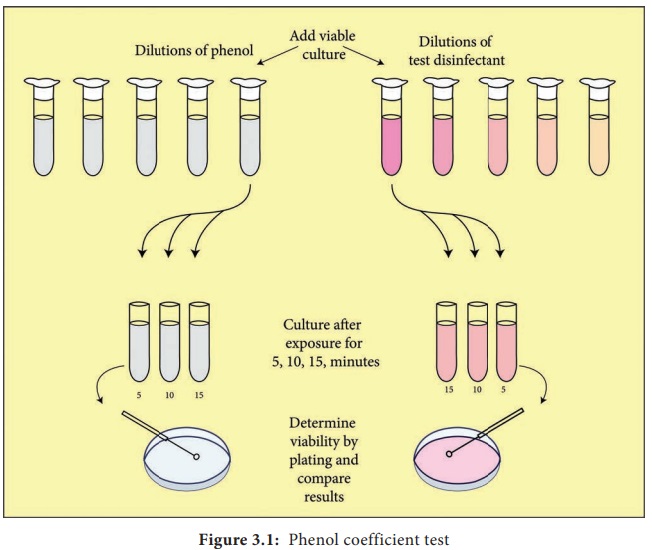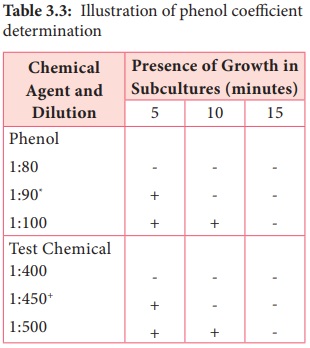Microbiology - Evaluation of Antimicrobial Chemical Agents | 12th Microbiology : Chapter 3 : Control of Microorganisms by Chemical Methods
Chapter: 12th Microbiology : Chapter 3 : Control of Microorganisms by Chemical Methods
Evaluation of Antimicrobial Chemical Agents
Evaluation of Antimicrobial Chemical Agents
Testing
of antimicrobial agents is a complex process regulated by two different federal
agencies.
The U.S.
Environmental Protection Agency regulates disinfectants, where as agents used
on humans and animals are under the control of the Food and Drug
Administration.
Testing
of antimicrobial agents often begins with an initial screening test to see if
they are effective and at what concentrations.
Laboratory
techniques for the evaluation of antimicrobial chemical agents are conducted by
one of the following three general procedures. In each procedure, the chemical
agent is tested against a specific microorganisms referred to as the test
organism
Agar Plate Method
A plate
of agar medium is inoculated with the test organism and the chemical agent is
placed on the surface of the medium. The chemical solution is first impregnated
in absorbent papers or confined by a hollow cylinder placed on the agar
surface. Following incubation, the plate is observed for a zone of inhibition
around the chemical agent. This is particularly suitable for semisolid
preparations
Tube Dilution Methods
Appropriately
diluted water soluble liquid substances are dispensed into sterile test tubes
and are inoculated with a measured amount of the test organism. At specified
intervals, a transfer is made from this tube into tubes of sterile media that
are then incubated and observed for the appearance of growth. It is necessary
in this type of procedure to ascertain whether the inhibitory action is
bactericidal and not bacteriostatic. This approach can also be used to
determine the number of organisms killed per unit time by performing a plate
count on samples taken at appropriate intervals.
Phenol Coefficient Test
Phenol
coefficient is a measure of the bactericidal activity of a chemical compound in
relation to phenol. Phenol coefficient is calculated by dividing the
concentration of test disinfectant at which it kills the organism in 10 minutes
and not in 5 minutes under the same conditions. This method is used for
evaluating the efficiency of water-miscible disinfectants.
Series of
10 test tubes with 2ml of distilled water is taken (Figure 3.1).

Phenol is
added to first test tube and dilution is made by transferring 1ml to next tube
up to 5 dilutions. Similarly commercial disinfectant is also diluted. Pure
culture of test organisms, such as Staphylococcus
aureus or Salmonella typhi , is
added to test tubes. Subcultures from
these tubes incubated at 37°C for 48 hours are examined for the presence or
absence of growth at intervals of 5, 10 and 15 minutes. The highest dilution
that kills the bacteria after 10 minutes, but not after 5 minutes is used to
calculate the phenol coefficient (Table 3.3),

Phenol
dilution of 1:90 showed growth at 5 minutes but no growth at 10 minutes Test
Chemical dilution of 1:450 showed growth at 5 minutes but no growth at 10
minutes phenol coefficient of test chemical as 450/90=5.
Related Topics